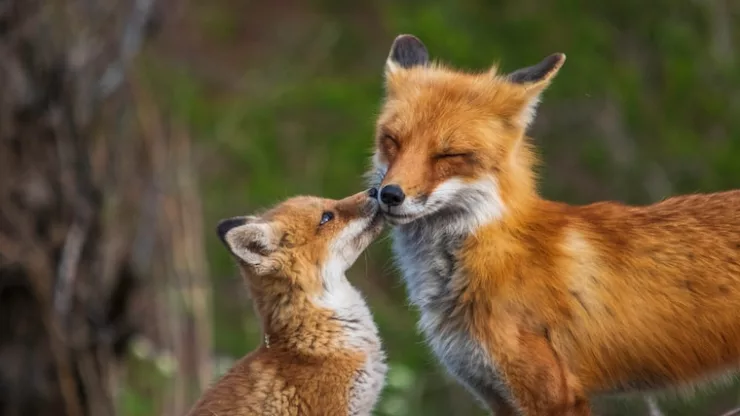A diverse range of animals has adapted to urban life, including the often-overlooked raptors: hawks.
Researchers have been studying urban hawks for a while now, and their recent findings about their diet have surprised many.
This article delves into the methods, findings, and implications of the study.
Jump to Section
Introduction
Background on urban hawks
Hawks are birds of prey that primarily feed on other animals. They are known for their sharp talons, excellent vision, and strong beaks that they use to hunt their prey.
Hawks have long been associated with rural areas, where they hunt small animals such as rodents, reptiles, and insects.
However, in recent years, researchers have been observing hawks in urban areas, where they have adapted to the urban environment and its resources.
Urban hawks tend to hunt larger prey, such as pigeons and squirrels, and have been observed nesting on skyscrapers and other tall buildings.
Why their diet is surprising
Researchers have been studying urban hawks for a while now, and their recent findings about their diet have surprised many.
The study found that urban hawks have a more diverse diet than their rural counterparts.
While rural hawks rely on a few species for their diet, urban hawks have been observed eating a variety of animals, including:
- Birds
- Squirrels
- Rats
- Fish
- Insects
- Reptiles
This diverse diet has raised questions about the impact of urbanization on the food web and ecosystem.
Methods
Research process
To investigate the diet of urban hawks, researchers collected and analyzed the pellets that hawks regurgitate after consuming their prey.
These pellets contain the undigested parts of the prey, such as bones, hair, and feathers, which provide insight into the hawk’s diet.
Data collection and analysis
The researchers collected pellets from urban hawks in various locations and identified the prey species using DNA analysis and bone identification.
They then compared their findings to previous studies of rural hawk diets.
Results
Overview of findings
The study found that urban hawks have a more diverse diet than their rural counterparts and have been observed eating a variety of animals, including birds, squirrels, rats, fish, insects, and reptiles.
Analysis of specific diet items
The study found that urban hawks feed on a higher proportion of birds and squirrels than their rural counterparts.
They also found that urban hawks consume more rats than expected, which could be due to the abundance of rats in urban areas.
Comparison to previous studies
The study’s findings contrast with previous studies of rural hawk diets, which found that rural hawks rely on a few species for their diet.
Discussion
Implications of findings
The study’s findings have implications for urban ecology and the food web.
The diverse diet of urban hawks suggests that they play a crucial role in controlling the population of various animals in urban areas.
Possible reasons for diet differences
The researchers suggest that the differences in diet between urban and rural hawks could be due to the availability of prey in urban areas.
Urban areas may provide a more diverse range of prey than rural areas, which could explain why urban hawks have a more diverse diet.
Importance of understanding urban ecology
Understanding the ecology of urban areas is crucial for managing the impact of urbanization on the environment.
Studying the diet of urban hawks provides insight into the food web and the role of predators in urban ecosystems.
Conclusion
Findings and suggestions for future research
The study found that urban hawks have a more diverse diet than their rural counterparts, and their diet includes a variety of animals, including birds, squirrels, rats, fish, insects, and reptiles.
Future research could investigate the impact of urban hawks on the population of prey species in urban areas.
Final thoughts
The study’s findings about the diet of urban hawks provide insight into the ecology of urban areas and the role of predators in urban ecosystems.
Understanding the diet of urban hawks is crucial for managing the impact of urbanization on the environment.
FAQ
What is the difference between urban and rural hawks’ diets?
Urban hawks have a more diverse diet than their rural counterparts, and their diet includes a variety of animals, including birds, squirrels, rats, fish, insects, and reptiles.
How do researchers collect data on hawks’ diets?
Researchers collect and analyze the pellets that hawks regurgitate after consuming their prey.
These pellets contain the undigested parts of the prey, such as bones, hair, and feathers, which provide insight into the hawk’s diet.
What are the implications of the study’s findings?
The study’s findings have implications for urban ecology and the food web.
The diverse diet of urban hawks suggests that they play a crucial role in controlling the population of various animals in urban areas.
I’m a nature enthusiast and creator of Metro Wilds and have spent years exploring the great outdoors.
With a passion for environmental conservation and sustainability, I have dedicated my career to writing about the beauty and wonders of nature, as well as the threats facing our planet.
Contact me at [email protected] for assistance.





